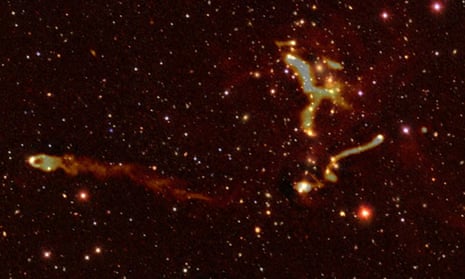New techniques for spotting previously hidden planets could reveal whether there is life out there – or not.
Australian scientists are part of a team that has for the first time used a radio antenna to find exoplanets, which means planets beyond our solar system.
Using the world’s most powerful antenna – the Low Frequency Array in the Netherlands (Lofar) – the team has discovered radio signals from 19 distant red dwarf stars.
Four of them are emitting signals that indicate that planets are orbiting them.
University of Queensland astrophysicist Dr Benjamin Pope says the finding opens up “radically new opportunities” to study exoplanets, which may be habitable.
The research was published on Tuesday in Nature Astronomy, at the same time as a second paper Pope has authored which confirmed the data using an optical telescope.
Pope said it was staff at Australia’s scientific research agency, the CSIRO, who first started studying the sky with military radars during the second world war. Then CSIRO developed the Parkes Observatory – known as The Dish.
Lofar is a prototype or “pathfinder” that is part of the development of the Square Kilometre Array, which will be the world’s largest telescope, based in Western Australia and South Africa. “Lofar’s a mini version of what we can expect in WA in five to 10 years,” Pope said.
The team studies space using radio signals and importantly worked out how to screen out other objects such as black holes and neutron stars to focus on red dwarfs, using the same technology that gives us polarised sunglasses.
Lead author Joseph Callingham said the team is confident the signals come from a magnetic connection between the stars and unseen orbiting planets.
“It’s a spectacle that has attracted our attention from light years away,” he said.
Pope said further study is needed, but that “the evidence rules out all the other possibilities other than that it is a star interacting with a planet”.
“We now have a new window on the sky thanks to the power of Lofar and techniques like putting on the polarised sunnies. This opens up a realm of possibilities for the future,” he said.
So far with Lofar, they have only looked at a fraction of the sky. Once the SKA comes online “we’ll find hundreds and hundreds of these things”, Pope said.
And the thing about red dwarves is that planets which orbit them often have Earth-like temperatures.
“So we’re looking for habitable planets as potential abodes for life. It’s not about finding Planet B for us to move to. It’s about finding whether there is life elsewhere in the universe. This would be a profound discovery,” he said.
Pope, who researches exoplanets, said it was likely that many planets orbiting red dwarves were pleasantly balmy but scoured by radiation, rendering them uninhabitable.
But some could be in the so-called Goldilocks zone.
As for his own opinion, he doesn’t think we are alone in the universe but is careful to distinguish between the search for extraterrestrial intelligence and the search for evidence of any sort of biological signature.
“I do think there’s life out there. I wouldn’t be doing this job if I didn’t think there was some realistic prospect of that,” he said, adding that he thinks we’ll have an answer within our lifetimes – either way.

Comments (…)
Sign in or create your Guardian account to join the discussion